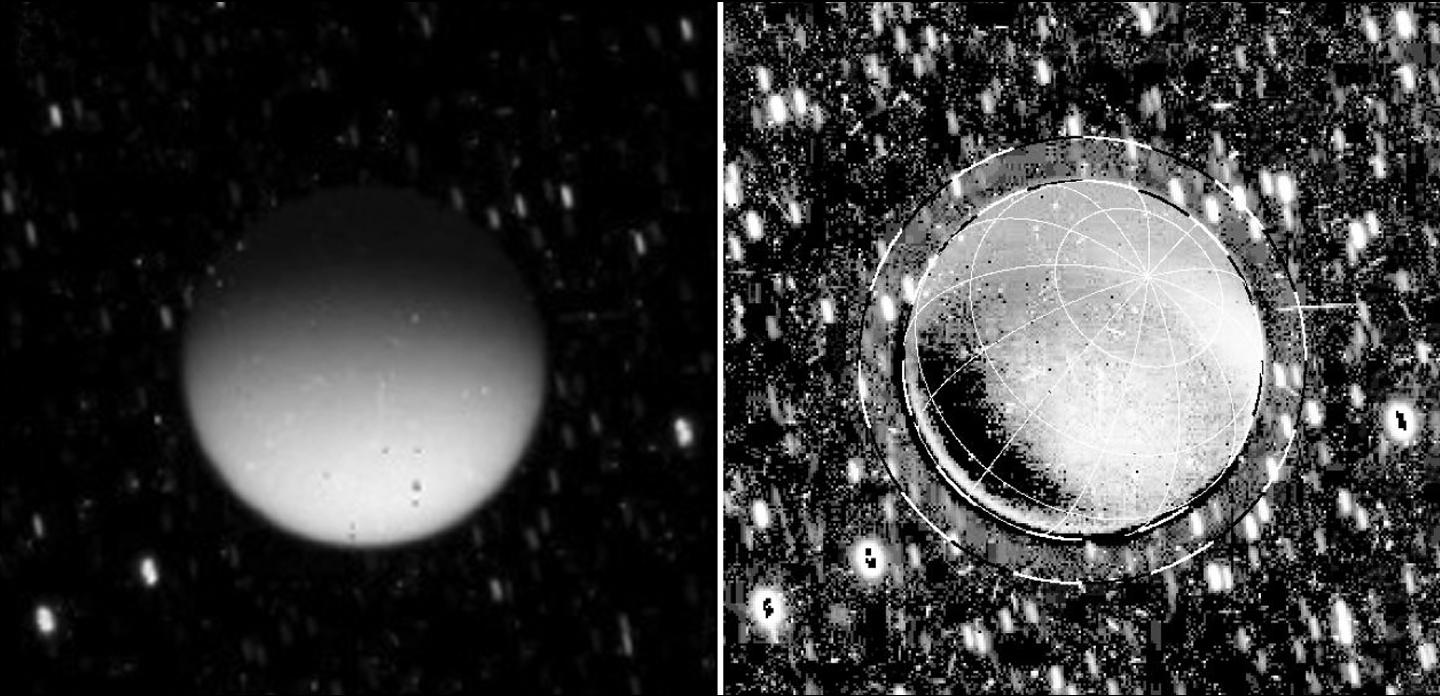Glowing Titan

| PIA Number | PIA16177 |
|---|---|
| Language |
|
This set of images from NASA's Cassini spacecraft shows Saturn's moon Titan glowing in the dark. Titan was behind Saturn at the time, in eclipse from the sun. The image on the left is a calibrated, but unprocessed image from Cassini's imaging camera. The image on the right was processed to exclude reflected light off Saturn and it is clear that even where Titan did not receive any Saturnshine, it is still emitting light. Some light appears to be emanating from high in the atmosphere (noted by the outer dashed line at about 625 miles or 1,000 kilometers in altitude). But more surprisingly, most of it is diffusing up from lower down in the moon's haze, from about 190 miles (300 kilometers) above the surface.
The white speckles in the background are streaks from stars. The camera kept focused on Titan during the 560-second-long exposure time of this image and the stars moved during that period relative to Titan. The image was taken on May 7, 2009.
The Cassini-Huygens mission is a cooperative project of NASA, the European Space Agency and the Italian Space Agency. The Jet Propulsion Laboratory, a division of the California Institute of Technology in Pasadena, manages the mission for NASA's Science Mission Directorate in Washington. The Cassini orbiter and its two onboard cameras were designed, developed and assembled at JPL. The imaging team is based at the Space Science Institute, Boulder, Colo.
For more information about the Cassini-Huygens mission visit http://saturn.jpl.nasa.gov or http://www.nasa.gov/cassini . The Cassini imaging team homepage is at http://ciclops.org .
Credit: NASA/JPL-Caltech/Space Science Institute
